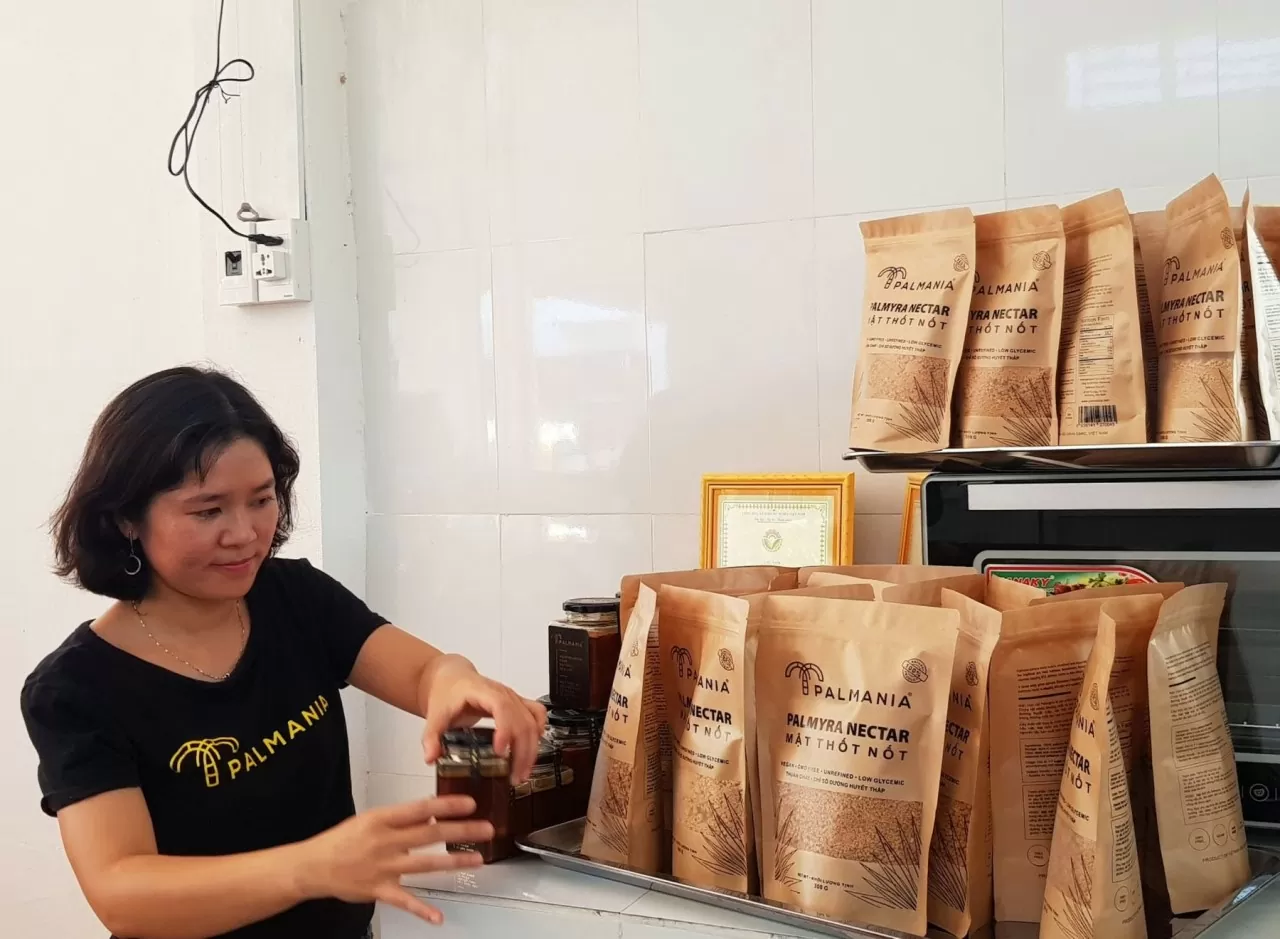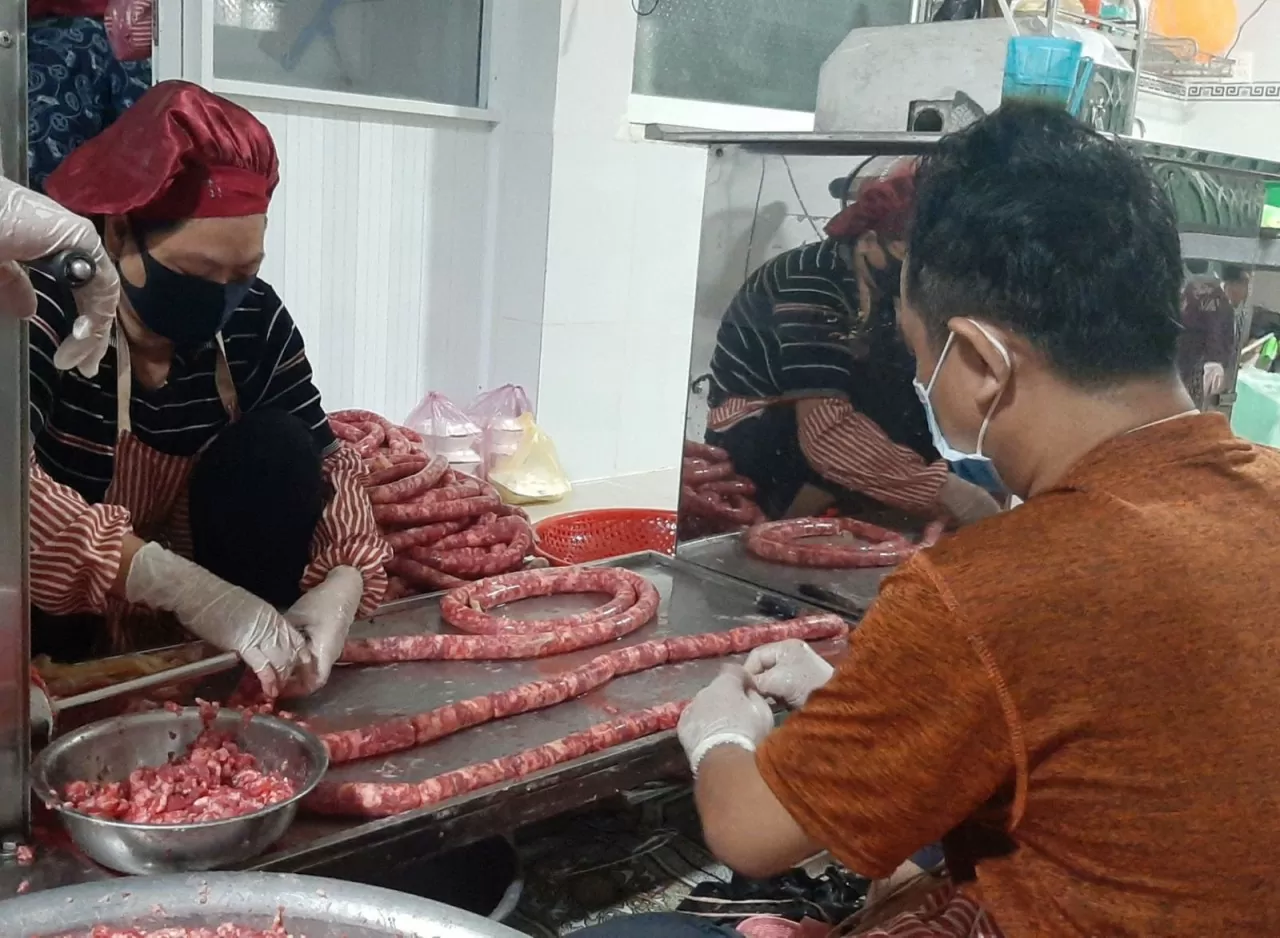
Preserving and promoting cultural values of ethnic minorities in line with tourism development
Latest
Notably, the execution of the National Target Program for Socio-Economic Development in Ethnic Minority and Mountainous Areas 2021-2030; Phase I from 2021-2025 (Program 1719) has provided essential resources and added momentum to the conservation efforts, enhancing traditional cultural values in conjunction with tourism development.
 |
| A vibrant wedding ceremony of the Khmer ethnic group in Nui To commune, Tri Ton district, An Giang province. (Photo: Phuong Nghi) |
Promoting traditional cultural values
During traditional festivals such as Tet Chol Chnam Thmay, Sen Dolta, the beginning and end of the Buddhist Lent… one can witness lively scenes that attract many visitors for experiential activities. Besides traditional festivals held within the community, functional departments in the province have also organized numerous cultural, sports, and tourism festivals to honor the distinct traditional cultural identity of the Khmer ethnic minorities. Many artisans and monks have been facilitated and supported with resources to teach traditional five-tone music, script, Chà Pay music, weaving, pottery, and Di Ke dance to the younger generation.
Most Venerable Chau Ty, Deputy Patriarch of the Vietnam Buddhist Sangha (VBS) cum Abbot of Soai So Tom Nop Pagoda (Nui Tocommune, Tri Ton district, An Giang province), expressed his excitement and emotion over the local authorities' great attention and favorable conditions for the Khmer community to preserve and promote their traditional music through songs, graceful dances, Du Ke plays full of emotion, and ceremonial rituals during festivals, all in vibrant traditional costumes.
Under Program 1719, An Giang has been allocated 8.170 billion VND for the Conservation and Promotion of Traditional Cultural Values of Ethnic Minorities in conjunction with tourism development. Of this, 7.427 billion VND comes from the central budget and 0.743 billion VND from local budget sources.
Director of the Department of Culture, Sports, and Tourism of An Giang, Nguyen Khanh Hiep, said: Authorities at all levels and localities continue to preserve, disseminate, transmit, and enhance the unique traditional values of ethnic minorities; improve awareness and pride, and the voluntary consciousness of the people in preserving and promoting national cultural values. Emphasis is placed on preserving and promoting traditional folk songs, dances, and music of ethnic minorities into distinctive cultural tourism products. Additionally, efforts include inventory, collection, documentation of representative ethnic minority heritage; reenactment of Khmer ethnic minority’s Dù Kê performing arts; conservation and restoration of the Cham people’s new house celebration rituals; and establishing folk culture clubs performing Du Ke of the Khmer ethnic community.
"In the process of preserving cultural values, reputable individuals with folk performing arts skills are a team of artisans transmitting secrets and knowledge on practicing intangible cultural heritage in general and folk songs, dances, and music, participating in teaching traditional culture to the young generation in schools and communities," Mr. Hiep stated.
 |
| Ms. Chau Ngoc Diu with the Palmania palm sugar product, which has received a 4-star OCOP certification. (Photo: Phuong Nghi) |
Leveraging potential for tourism development
In the Cham village of Da Phuoc (An Phu district, An Giang province), life has significantly improved after being supported to participate in community tourism models. Mr. Ysa, a resident of the Cham Da Phuoc village, shared: "Previously, traditional woven products, sarongs, scarves, clothes, and handicrafts mainly served the Cham community; now, they have become tourist products favored by visitors. Similarly, traditional dishes of the Cham people in An Giang such as tung lo mo (beef sausages), ca ri com ni (a type of curry), and grilled sponge cake have become specialties serving tourists. Developing community-based tourism tied to traditional culture not only helps the Cham ethnic minorities increase income, enhance quality of life but also encourages the community to be more confident and proactive in interactions. Many Cham people have risen to success."
A notable example of the OCOP product from the Khmer ethnic community in the mountainous district of Tri Ton is the Palmania sap sugar by Ms. Chau Ngoc Diu, Director of Palmania Joint Stock Company (Tri Ton town, Tri Ton district, An Giang province), which has been granted a registered exclusive brand certificate, a 4-star OCOP product, and is proposed as a 5-star national OCOP product.
Ms. Chau Ngoc Diu said, "Palmania is a passion, a desire, and also a hope of the Khmer people in the Bay Nui area. 100% natural Palmania does not use additives, and because it does not use the sap extraction method, the powdered form retains the distinctive fragrance and flavor of traditional thick palm sugar. Thanks to its quality, the product has attracted foreign markets. Currently, Palmania palm sugar is distributed in 14 provinces and cities, with over 50 sales points nationwide, and the company is actively promoting the product in the European market."
Visitors to the Cham village of Chau Phong can experience ancient crafts, enjoy traditional dishes, and learn about the community’s vibrant culture. Ms. Hua Thi Rokya, a Cham woman from Phum Xoai, Chau Phong commune (Tan Chau town, An Giang province), chose to return to her hometown to start a business with her family’s traditional craft after graduating from university and having a stable life in Ho Chi Minh City. Seeing the potential in the product and its popularity, she is determined to “take the bell to strike in foreign lands,” traveling from the South to the North, seizing every opportunity to promote her products. Whenever guests visit the Cham village, Rokya accompanies them throughout the program, guiding them to experience and taste tung lo mo, while also introducing the history and cultural values of the Cham community.
Through community-based tourism development, not only does it contribute to preserving traditional cultural values, but it also enables locals to earn additional income from showcasing and selling their products.
 |
| The processing of tung lo mo by Ms. Hua Thi Rokya’s family. (Photo: Phuong Nghi) |
Hua Thi Rokya expressed: "I am very passionate about this community tourism model; however, it had to be temporarily suspended due to the COVID-19 pandemic. By the end of 2022, I started again, and there have been many tour groups visiting Anas. The visitors are very interested and attentive to what I share about Cham culture and the story of the products; they ask many questions about the products and the traditional culture because the more we talk, the more they want to hear."
The attention, support, and facilitation to preserve and promote the unique cultural values of ethnic minorities through concrete actions closely aligned with real needs have contributed to creating a widespread impact in preserving and enhancing the unique cultural aspects of the ethnic minorities in An Giang.

















